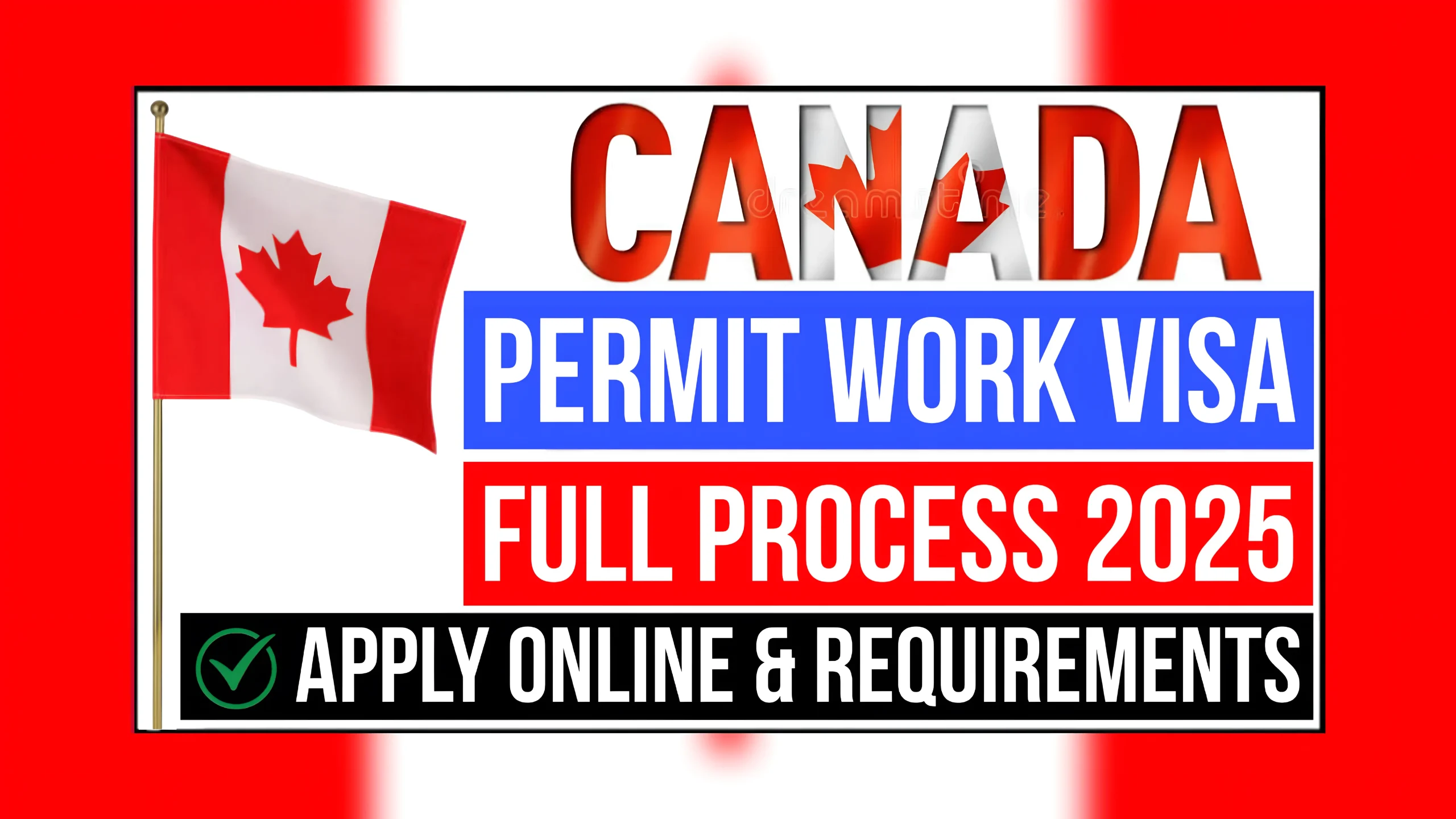Canada Work Permit Visa 2025: Your Ultimate Guide to Working in Canada
The Canada Work Permit Visa 2025 is the golden key that unlocks this door of opportunity. As we look towards 2025, Canada’s immigration landscape continues to evolve, reflecting its steadfast commitment to attracting global talent to fuel its economic growth and address labour market needs.
This comprehensive guide will provide you with everything you need to know about the Canada Work Permit Visa 2025, from the different types available and eligibility criteria to the step-by-step application process and anticipated updates for the coming year.
Understanding the Canada Work Permit Visa
A Canada Work Permit Visa is an official authorization issued by Immigration, Refugees and Citizenship Canada (IRCC) that allows a foreign national to work legally in Canada for a specific employer, in a specific job, and for a predetermined period. It is crucial to understand that a work permit is typically a temporary document and is different from Permanent Residency (PR), though it can often be a significant stepping stone towards it.
There are two main categories of work permits:
-
Employer-Specific Work Permit: This is the most common type. It allows you to work according to the conditions on your permit, which include:
-
The name of your specific employer.
-
How long you can work.
-
The location where you can work (if applicable).
-
-
Open Work Permit: This permit allows you to work for any employer in Canada, with some exceptions. You are not tied to a single job or employer. This type is often available to:
-
Spouses or common-law partners of skilled work permit holders or international students.
-
Participants in specific programs like International Experience Canada (IEC).
-
Recent graduates of eligible Canadian Designated Learning Institutions (DLIs).
-
Types of Work Permits and Pathways for 2025
The pathways to obtaining a Canada Work Permit Visa 2025 are diverse, catering to a wide range of skills, circumstances, and nationalities. The following table outlines the primary programs and their key features.
| Program / Pathway Name | Type of Permit | Key Eligibility Requirements | Ideal For |
|---|---|---|---|
| Temporary Foreign Worker Program (TFWP) | Employer-Specific | – A valid job offer from a Canadian employer. – A positive Labour Market Impact Assessment (LMIA) from ESDC (with exceptions). – Proof you will leave Canada after permit expires. |
Skilled workers, seasonal agricultural workers, in-demand caregivers, and other occupations facing labour shortages. |
| International Mobility Program (IMP) | Open or Employer-Specific | – Varies by specific agreement/category. – Often involves LMIA-exempt job offers based on reciprocal agreements (e.g., CUSMA, GATS) or significant benefit to Canada. |
Professionals under trade agreements (e.g., CUSMA), intra-company transferees, researchers, and spouses of students/work permit holders. |
| International Experience Canada (IEC) | Open Work Permit | – Age typically 18-35 (varies by partner country). – Citizenship in one of over 30 partner countries. – Have sufficient health insurance and funds. |
Young adults from partner countries seeking a working holiday to travel and work in Canada. |
| Post-Graduation Work Permit (PGWP) | Open Work Permit | – Graduation from an eligible Canadian DLI. – Studied full-time in a program至少 8 months long. – Apply within 180 days of receiving final marks. |
International students who have graduated from a Canadian college or university and want to gain Canadian work experience. |
Eligibility and Requirements for a Canada Work Permit Visa 2025
While specific requirements depend on the program, several universal criteria must be met for a successful application:
-
Proof of Identity: A valid passport or travel document.
-
Good Health: You may need to undergo a medical exam to prove you are in good health.
-
No Criminal Record: You must provide police clearance certificates to prove you have no criminal record and are not a security risk.
-
Genuine Intent: You must convince an immigration officer that you will leave Canada at the end of your authorized stay.
-
Financial Proof: Evidence that you can support yourself and your family members during your stay in Canada.
-
Job Offer (for Employer-Specific): A written job offer or contract from a Canadian employer.
-
LMIA (if required): For most TFWP applications, the employer must obtain a positive LMIA from Employment and Social Development Canada (ESDC), proving that no Canadian citizen or permanent resident could fill the job.
The Step-by-Step Application Process
The journey to securing your Canada Work Permit Visa 2025 typically follows these steps:
-
Secure a Job Offer (if required): Your first and most crucial step for an employer-specific permit is to find a Canadian employer willing to hire you. The employer may need to go through the LMIA process, which can be lengthy and requires them to demonstrate efforts to hire Canadians first.
-
Gather Your Documents: Meticulously prepare all required documents. This includes your passport, job offer letter, LMIA copy (if applicable), educational credentials assessments (if needed), proof of work experience, proof of funds, and police clearances.
-
Submit Your Application: You can apply online through the IRCC website (highly recommended for faster processing) or via a paper application submitted to a Visa Application Centre (VAC). The online portal is efficient and allows you to track your status.
-
Provide Biometrics: Most applicants need to provide biometrics (fingerprints and a photograph) at a designated VAC. You will receive a Biometrics Instruction Letter (BIL) after you apply.
-
Wait for Processing and Interview: Processing times vary drastically based on the program, your country of residence, and the volume of applications. An officer may request additional documents or an interview.
-
Receive a Decision and Travel to Canada: If approved, you will receive a Port of Entry (POE) Letter of Introduction. You must present this letter to the Canada Border Services Agency (CBSA) officer when you arrive in Canada. The officer will then issue your actual work permit.
What to Expect in 2025: Updates and Trends
The Canada Work Permit Visa 2025 landscape is not static. Canada continuously refines its policies to meet economic demands. Here’s what applicants can anticipate:
-
Focus on In-Demand Sectors: Canada’s immigration strategy will continue to prioritize sectors with acute labour shortages, such as healthcare, STEM (Science, Technology, Engineering, and Mathematics), skilled trades, transportation, and agriculture. Applicants with experience in these fields may see streamlined processes.
-
Digitalization and Faster Processing: IRCC is heavily investing in digitizing its systems to reduce backlogs and accelerate processing times. The online application portal will remain the primary and most efficient method.
-
Potential Program Caps and Changes: Programs like the IEC or specific streams within the TFWP may see adjustments in quotas or eligibility based on economic and social factors. Staying updated with the official IRCC website is paramount.
-
Enhanced Pathways to Permanent Residence: Many temporary workers use their Canadian work experience as a critical component for PR programs like Express Entry’s Canadian Experience Class (CEC) or Provincial Nominee Programs (PNPs). The synergy between temporary and permanent immigration streams will remain strong in 2025.
Tips for a Successful Application
-
Start Early: The entire process, from job hunting to permit issuance, can take many months. Begin your preparations well in advance.
-
Accuracy is Everything: Ensure every field in your application form is filled out accurately and all documents are genuine. Misrepresentation can lead to a five-year ban from Canada.
-
Seek Professional Advice (if needed): While many applicants navigate the process alone, consulting a Regulated Canadian Immigration Consultant (RCIC) can be invaluable for complex cases.
-
Monitor Official Sources: Rely only on official IRCC websites and communications for information. Beware of fraudulent consultants promising guaranteed results.
Conclusion
The Canada Work Permit Visa 2025 represents a dynamic and accessible pathway for individuals worldwide to contribute to Canada’s vibrant economy and experience its renowned multicultural society. Whether you are a highly skilled professional, a recent graduate, or a young adventurer seeking a working holiday, understanding the intricacies of the available programs is your first step toward success. By thoroughly preparing your application, staying informed of the latest updates, and aligning your skills with Canada’s economic needs, you can turn your ambition of working in Canada into a reality. Your Canadian journey awaits.



